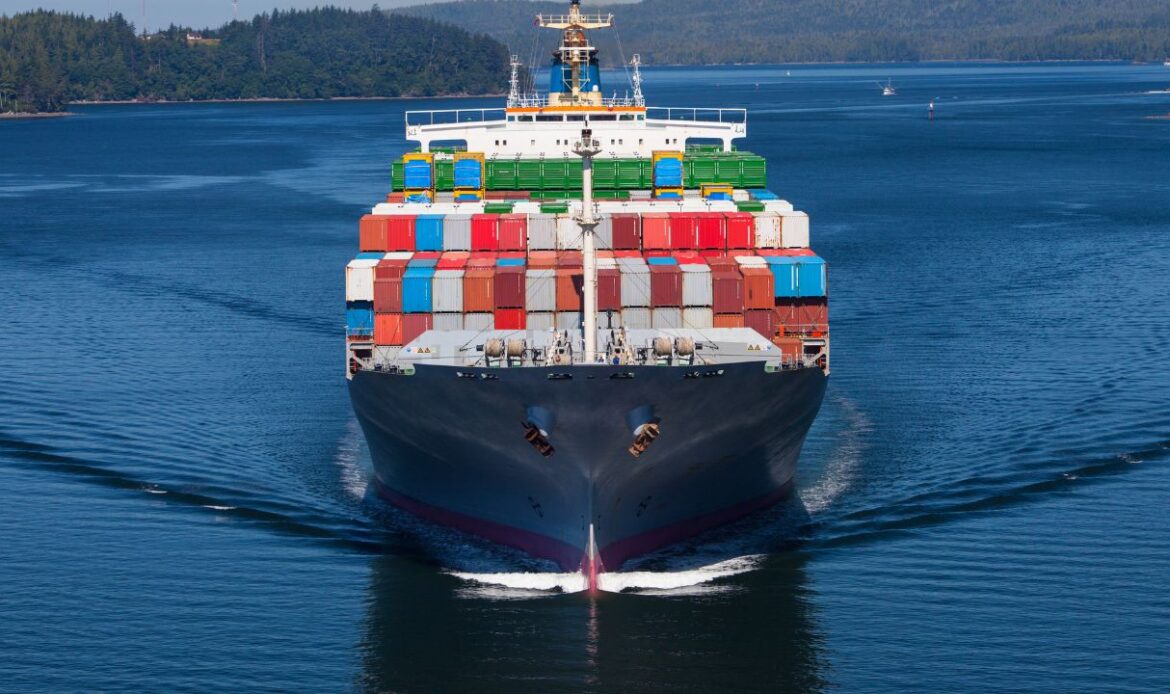
Sending a package or moving your belongings across the globe can feel like a major challenge. When your destination is the United Arab Emirates, you want assurance that your items will arrive quickly and safely. In fact, international shipping to UAE involves much more than just putting a stamp on a box. You need to plan carefully, understand customs regulations, and choose the right partner to manage logistics effectively.
Fortunately, this guide will walk you through everything you need to know about achieving fast and secure international shipping to UAE. We’ll cover essential steps—from proper packing and documentation to navigating customs—so your shipment becomes a smooth and stress-free experience. Whether you’re sending a small parcel, relocating your home, or managing business inventory, understanding the process helps you ship successfully from start to finish.
Why Planning is Crucial for Shipping to the UAE
The United Arab Emirates is a major hub for global trade and commerce, with world-class ports and airports. However, because this environment is so active, customs and import procedures are well-defined and strictly enforced. If you fail to plan properly, you may face frustrating delays, unexpected costs, or even shipment rejection.
By preparing in advance, you ensure your items meet all regulations. As a result, your shipment moves through checkpoints smoothly and reaches its destination faster. Ultimately, when you plan ahead, you avoid common mistakes and create a positive, stress-free shipping experience.
The Foundation of Secure Shipping: Proper Packing
The security of your items begins long before you hand them over to a freight service. How you pack your goods determines how well they’re protected during transit. International shipments undergo multiple handling stages and various climates, making strong packing essential.
Essential Packing Tips
- Use High-Quality Materials: Start with new, sturdy boxes. Double-walled corrugated boxes are ideal for heavy or fragile items. Avoid using old boxes that may have lost strength.
- Cushion Everything: Wrap each item individually with materials like bubble wrap or packing paper. Fill any empty spaces in the box with packing peanuts, crumpled paper, or air pillows to prevent items from shifting.
- Distribute Weight Evenly: Place heavier items at the bottom of the box and lighter ones on top. This prevents crushing and makes the box more stable.
- Seal Boxes Securely: Use strong packing tape to seal all seams on the top and bottom of the box. A few extra strips of tape can make a big difference.
- Label Clearly: Write the destination address and your return address clearly on the box. It’s also wise to place a second label inside the box in case the outer one gets damaged.
For high-value or fragile items, use custom crating. This method gives your item a rigid, protective shell for maximum security during international shipping to UAE.
Navigating Customs Clearance in the UAE
Customs clearance is often the most intimidating part of international shipping. Because the UAE enforces specific import rules, customs officials inspect every shipment. Therefore, learning these regulations helps you prevent delays and avoid unnecessary issues.
Prohibited and Restricted Items
Before you pack, check which items you can’t send. Prohibited items will be taken away and can cause penalties, while restricted items need special permission to ship.
Common Prohibited Items:
- Narcotics and certain medicines
- Gambling devices
- Content that contradicts Islamic values
- Firearms and ammunition (without prior permission)
- Certain electronic devices, like radar jammers
Common Restricted Items:
- Medications (require a doctor’s prescription and MOH approval)
- Antiques and cultural artifacts
- Pets and live animals
- Drones and other remote-controlled aircraft
Always check the latest list of prohibited and restricted items from official UAE government sources before shipping. An experienced logistics partner can also provide guidance on what is permissible.
Required Documentation for Smooth Customs Clearance
Accurate and complete paperwork speeds up customs clearance. Missing or incorrect documents cause most delays.
Key Documents You Will Need:
- Commercial Invoice: This is required for all shipments. It details the contents, value, and origin of the goods. Be honest and specific about the value to avoid issues.
- Packing List: A detailed list of everything in your shipment. This helps customs officials verify the contents against the commercial invoice.
- Bill of Lading (for sea freight) or Air Waybill (for air freight): This is the contract between you and the carrier. It also serves as a receipt for your goods.
- Certificate of Origin: This document verifies the country where the goods were manufactured.
- Import Permit: Required for any restricted items you are shipping.
Gather and verify all documents before shipping to ensure smooth processing.
Choosing the Right Shipping Method: Air vs. Sea Freight
Your decision between air and sea freight depends on your budget, timeline, and shipment size. Both offer unique benefits for logistics to UAE.
Air Freight: The Fast Option
Benefits of Air Freight:
- Speed: Ideal for time-sensitive shipments, urgent documents, or perishable goods.
- Reliability: Flight schedules are generally very reliable, making it easier to predict arrival times.
- Security: Less handling and shorter transit times mean a lower risk of damage or theft.
The main drawback of air freight is its cost, which is significantly higher than sea freight. It is best suited for smaller, high-value, or urgent shipments.
Sea Freight: The Cost-Effective Solution
For larger shipments, like moving household goods or shipping commercial products in bulk, sea freight is the more economical choice.
Benefits of Sea Freight:
- Cost: Far more affordable than air freight, especially for large volumes.
- Capacity: Shipping containers can accommodate very large and heavy items that would be impossible to send by air.
- Environmental Impact: Sea freight has a lower carbon footprint per ton-mile compared to air freight.
The trade-off for the lower cost is time. A sea shipment can take several weeks to reach the UAE. You need to plan your timeline accordingly when choosing this shipping solution.
What is the Cheapest Way to Ship Internationally to UAE?
Sea freight is generally the cheapest method for international shipping to UAE. If you choose a shared container (Less than Container Load, or LCL), you can split costs with others and save more compared to air freight or a full container.
The Role of a Professional Shipping Partner
Managing all the moving parts of international shipping to UAE on your own can be overwhelming. This is where a professional shipping and relocation company becomes an invaluable asset. A reliable partner handles the complexities for you, offering comprehensive shipping solutions from start to finish.
How a Professional Partner Helps
- Expert Guidance: They provide expert advice on everything from packing to customs regulations, ensuring you are fully prepared.
- Documentation Management: They help you prepare and verify all necessary paperwork, minimizing the risk of errors that could cause delays.
- End-to-End Logistics: They manage the entire process, including pickup, freight services, customs clearance, and final delivery to your door in the UAE.
- Tracking and Communication: A good provider offers real-time tracking and keeps you informed at every stage of the shipment’s journey.
- Insurance: They can arrange comprehensive insurance coverage to protect your goods against loss or damage during transit, giving you complete peace of mind.
Partnering with an experienced company transforms a potentially complicated process into a streamlined, secure, and efficient experience. They have the knowledge and network to navigate the intricacies of global shipping, ensuring your items arrive on time and in perfect condition.
Final Checklist for Your Shipment to the UAE
Before you send your goods on their way, run through this final checklist to ensure you have covered all the bases for fast and secure international shipping to UAE.
- Research and Plan: Have you confirmed what you can and cannot ship to the UAE?
- Pack Securely: Are your items properly packed and cushioned in sturdy boxes?
- Label Everything: Is every box clearly labeled with the destination and return address?
- Prepare Documents: Have you gathered and accurately completed all required customs paperwork?
- Choose Your Method: Have you selected the right shipping method (air or sea) for your timeline and budget?
- Select a Partner: Have you chosen a reputable shipping company to manage your logistics?
- Arrange Insurance: Is your shipment fully insured for its total value?
By ticking off each of these items, you can feel confident that your shipment is ready for its journey.
The key to fast and secure international shipping to UAE is a combination of thorough preparation and expert support. By understanding the requirements and partnering with a trusted logistics provider, you can ensure your goods navigate the complexities of global shipping with ease, arriving safely and on schedule.
Ready to make your international shipping to UAE simple and worry-free? Contact the experts at Universal Relocations today for a personalized quote and let our team handle all the details of your move.

 800-13-7356
800-13-7356
